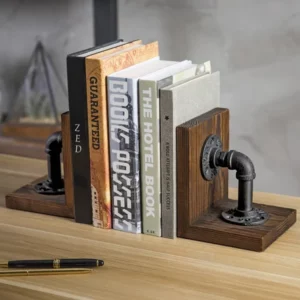
This is Not the End…
…of my Education on Endings (but it’s a start!).
In October 2018, I attended Mile Hi Con in Denver to learn about how to become a published author and how to write better. It was a great weekend where I met some awesome people and learned so much. One thing that really hit home was on how to write endings. It’s always good to start with the end, right?
This panel was the last panel of the con, right before closing ceremonies and was hosted by Connie Willis. She is an old-school sci-fi writer whose most popular world features a series of time-travelling historians. If you are interested in WWII history, especially in the places where the war actively wasn’t (such as English), you should check out “Blackout” and “All Clear.” This is a 2-part series.
After hearing her talk at this panel, I have to say that I have an intellectual crush on her now. As a Toastmasters member, I was very excited to see her using the key Toastmasters structure for her panel: Tell us what you’re going to tell us, tell us, tell us what you told us. She is a fabulous public speaker!
Her insights on endings were very enlightening. She talked about how to have a successful ending and what you should avoid with lots of examples. Here is what I got out of it.
*********
Part 1: Things You Have to Do to Have a Successful Ending
A). Deliver what you promised: You have formed a contract with your reader so insights should be gained, & conflicts resolved. Thus, make sure to understand what you are promising to the reader as you end your story.
B). Tie up the loose ends: Dispose of/deal with/address the existence of secondary characters (example: Where was Toto? He always appeared right at the time the audience asked that question). Resolve sub-plots. Have an editor tell you if they understood (or not) what happened at the end. You want the ending that you want, none one that readers will infer, so don’t let them make assumptions!
C). Show (don’t tell) how the characters have changed. Take Scrooge from A Christmas Carol. Dickens showed how he’d changed by sending through Scrooge through the town doing the things he would not do in the beginning (buying a turkey for the poor, giving Cratchet a raise, hanging out with his nephew). Parallel scenes like this also give the ending extra credit but we will get back to that.
Part 1.2: Bad Endings
Bad endings are things that make the audience lose faith in your ability as a story teller. You can either do this by lying to them, confusing them, or copping out. For instance:
A). Deus ex Machina (God of the Machine) – an ending that is brought about not by the characters but by some external “magical” force. Or: it was all a dream/experiment/crazy delusion (not real).
B). Conflict was not resolved. Ex). 2012: A Space Odyssey
C). Nothing happens. Ex). Captain Corelli’s Mandolin. This type of ending is inspired by James Joyce’s “epiphany” endings but is frequently done wrong and is not meaningful.
D). The audience does not understand what happened. Ex). Matrix: Revolution
E). The audience does not understand why the characters did what they did (i.e. they did something uncharacteristic to resolve the story). Ex). Titanic – when Rose throws the necklace into the water.
F). The wrong ending happens. Ex). Taking Shakespeare and making the endings happy
G). The rules are changed at the last minute. Ex). Harry Potter and the Sorcerer’s Stone: Gryffindor did not have the most point in the house competition but the teachers decided that the house would win b/c they “liked” Harry Potter.
Part 2: Things that will improve endings and make them extra impactful
A). Framing: Begin and end the story in the same place but show how much has changed. Examples: 1). Room with a View (began & ended in the same “room with a view” but the main character was completely different). 2). The Lady Eve — this is an old movie but apparently is framed very well so it’s on my list.
B). Add in Tiebacks: this is like framing but refers more to the little events that run throughout the story. These can be running gags or little quirks that become more meaningful, funny, and important each time they are brought up. For instance (I can’t remember the movie but it was another old one) where the elevator only ran if you tap danced in it. Thus, every time the characters had to take the elevator, they had to dance–Even the stern housekeeper.
********
So, that’s all I’ve got. Some of these things definitely did not occur to me as I don’t have any formal “Creative” writing training. It gives me a lot to think about for my own novel, Anamnesis. Even though the story is completely written, I may have to change up the Epilogue. Or the last chapter…
The bad endings discussion part was almost more helpful in that it gave some concrete examples to show the concepts. I know that for the next few months, at least, I will be paying even more attention to the endings of movies, books and TV shows.


